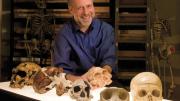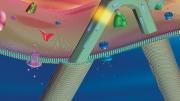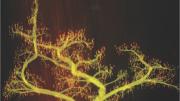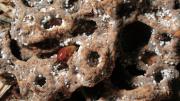Science
Discover the scientific breakthroughs and engineering innovations being pioneered across Harvard’s labs and centers.
Harvard scholars study the Amazon rainforest under global climate change
Students grapple with the fate of the rainforest in a changing climate.
Harvard Professor Daniel Lieberman on the Evolution of the Human Head
Daniel Lieberman on how the human head shape evolved, and what it reveals about us
A video game for anger management and emotional control
At Children's Hospital Boston, a video game offers emotionally explosive youths methods of self-control.
Charles Lieber's nanoscale transistors can enter cells without harming them
Chemist Charles Lieber and his colleagues have developed a nanoscale transistor so small it can enter, probe, and communicate with cells without harming them.
Warren Brown: Stars escaping the Milky Way help map matter in our galaxy
Stars escaping the Milky Way help Warren Brown and other astronomers map the distribution of matter in our galaxy.
Exercise and caloric restriction counter aging in neural synapses
Caloric restriction and exercise boost mental acuity and motor ability by rejuvenating synapses.
Regenerative medicine paper retracted
An important paper in regenerative biology has been retracted after its senior author, associate professor of stem-cell and regenerative biology Amy Wagers, raised concerns.
Can an HIV-infected person safely have a child with an uninfected partner?
Can an HIV-infected person safely have a child with an uninfected partner? Harvard scholars highlight a new approach.
Michael Greenberg studies molecular-level memory formation and eRNA
Neurobiologist Michael Greenberg investigates how memories form at a molecular level, and discovers a new class of RNA.
Robert Pringle says termite-mound distribution reveals ecosystem productivity
Robert Pringle says the grid-like distribution of Kenyan termite mounds helps answer an old question about ecosystems.
by Samuel Bjork








